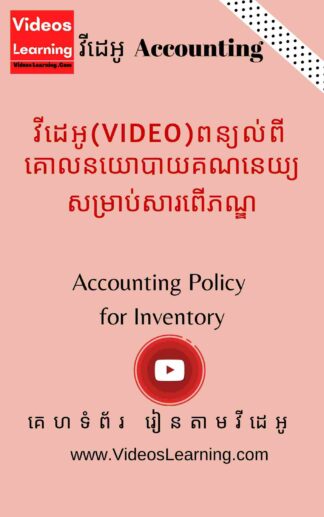ឧបករណ៍ហិរញ្ញវត្ថុ: ការបង្ហាញ ( Financial Instruments: Presentation / IAS 32 )
$9
IAS 32 បង្ហាញពីការណែនាំសម្រាប់ការមិនស្តាប់បង្គាប់រូបិយវត្ថុ។ ការទទួលស្គាល់ និងការប៉ាន់ប្រមាណ និងការបែកខ្ញែកនៃការមិនគោរពតាមថវិកា គឺជាកម្មវត្ថុនៃ IFRS 9 ឬ IAS 39 និង IFRS 7 រៀងៗខ្លួន។ សម្រាប់ការណែនាំ ប្រាក់ដែលទាក់ទងនឹងការបះបោរត្រូវបានចាត់ថ្នាក់ទៅជាធនធានរូបិយវត្ថុ បំណុលទាក់ទងនឹងប្រាក់ និងតម្លៃដែលបះបោរ។ ការបំបែករវាងកាតព្វកិច្ចទាក់ទងនឹងប្រាក់ និងតម្លៃអាស្រ័យលើថាតើសារធាតុមួយមានការប្តេជ្ញាចិត្តក្នុងការផ្តល់សាច់ប្រាក់ (ឬទ្រព្យសម្បត្តិរូបិយវត្ថុមួយចំនួនផ្សេងទៀត)។ ទោះយ៉ាងណាក៏ដោយ ករណីពិសេសត្រូវបានអនុវត្ត។ នៅពេលដែលការដោះដូរនឹងត្រូវបានទូទាត់នៅក្នុងការផ្តល់ជូនរបស់អ្នកចេញ ការចាត់ថ្នាក់អាស្រ័យលើថាតើចំនួននៃការផ្តល់ជូនដែលត្រូវចេញត្រូវបានទូទាត់ ឬអថេរ។ ឧបករណ៍រូបិយវត្ថុចម្រុះ ដូចជាមូលបត្របំណុលដែលអាចបំប្លែងបាន គឺជាផ្នែកមួយទៅក្នុងសមាសធាតុនៃតម្លៃ និងហានិភ័យ។ នៅពេលដែលឧបករណ៍ត្រូវបានចេញ សមាសធាតុតម្លៃត្រូវបានវាស់ជាភាពផ្ទុយគ្នារវាងការគោរពសមហេតុផលនៃឧបករណ៍ផ្សំ និងការគោរពសមហេតុផលនៃសមាសធាតុហានិភ័យ។ ធនធានហិរញ្ញវត្ថុ និងបំណុលថវិកាមានតុល្យភាព
IAS 32 indicates introduction for monetary disobedient. The acknowledgment and estimation and the divulgence of budgetary disobedient are the subjects of IFRS 9 or IAS 39 and IFRS 7 respectively. For introduction, money related rebellious are classified into monetary resources, money related liabilities and value rebellious. Separation between a money related obligation and value depends on whether an substance has an commitment to provide cash (or a few other monetary asset). However, special cases apply. When a exchange will be settled within the issuer’s possess offers, classification depends on whether the number of offers to be issued is settled or variable. A compound monetary instrument, such as a convertible bond, is part into value and risk components. When the instrument is issued, the value component is measured as the contrast between the reasonable esteem of the compound instrument and the reasonable esteem of the risk component. Financial resources and budgetary liabilities are counterbalanced o



